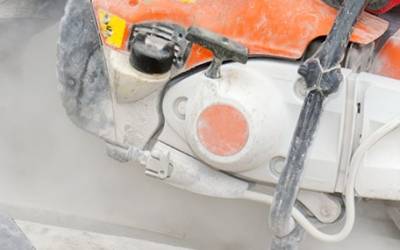Call 1800 641 743 for a free first interview. Ask about our No Win No Fee OR Expenses* fee policy.
Published: 30 November 2017
Author:
Dan McGlade
How the law can help in cases of asbestos
November is Asbestos Awareness Month, which aims to educate people about the dangers of asbestos in and around homes because Australia has one of the highest rates of asbestos-related diseases in the world.
I have worked on a number of asbestos compensation claims and the common theme is that they are always sad cases involving devastating outcomes for clients and their families.
Asbestos has since been banned in industry and the workplace. There are historic cases where tradesmen would return from work and shake off the asbestos from their overalls, or their wives would shake off the clothes before laundering with children playing nearby and they would inhale the fibres and would later contract asbestos related diseases.
One of the most infamous and shameful cases in Australian corporate history involved James Hardie Industries – an industrial building materials company and manufacturer of asbestos products from which the tragic consequences will be felt for many years to come. An actuarial report found that James Hardie asbestos liabilities were likely to reach A$574.3 million. In May of this year, a James Hardie asbestos victim received a record $1m compensation payout in Adelaide.
My clients have ranged from their forties to 91 years of age and come from varied backgrounds and occupations. They seek legal advice in an effort to get compensation for their treatment costs, their loss of life expectancy, their pain and suffering and future loss of earnings.
What exactly is asbestos?
Asbestos is a naturally occurring fibrous silicate mineral. It was considered a versatile product because it is able to withstand heat, erosion and decay and has fire and water-resistant properties.
It becomes a health risk when asbestos fibres are released into the air and breathed in.
What are asbestos related diseases?
According to the Asbestos Diseases Society of Australia, diseases caused by asbestos include:
- Mesothelioma – a cancer affecting the mesothelial cells which cover most internal organs. There are two main types of mesothelioma; pleural and peritoneal. Mesothelioma is an insidious disease and even in cases of minimal exposure is fatal. Clients are often given 12-18 months to live. Typically, the disease doesn’t manifest until 20 – 40 years after the exposure – but in some cases sooner, 10-15 years after exposure.
- Asbestosis – a chronic disease characterised by scarring in the lungs which leads to long-term breathing complications. This condition is usually due to prolonged and heavy exposure.
- Lung cancer
- Laryngeal cancer
- Ovarian cancer
- Testes cancer
- Pleural plaques
- Pleural thickening
- Pleural effusion
Mesothelioma and asbestosis can be difficult to diagnose and sometimes a diagnosis is not confirmed until a very late stage.
Stats and symptoms
The Australian Mesothelioma Registry reports that 641 Australians died from mesothelioma in 2014, the most recent public accounting of the disease. Those figures also indicated the disease toll was increasing over time, and different medical models point to a peak in deaths from mesothelioma between 2014 and 2021. The number of mesothelioma cases in the country is expected to reach 18,000 according to the Australian Institute of Health and Welfare. Of those who died from mesothelioma in 2014, approximately 80 percent were men, and the age range of those affected was 70 to 79.
The first symptoms may not appear for 10 to 50 years. The main symptoms of pleural mesothelioma include:
- shortness of breath – which usually worsens with activity or when lying down
- chest pain or pain in the shoulder and upper arm
- loss of appetite, weight loss
- persistent cough or a change in a person’s usual cough
- heavy sweating, particularly at night.
DIYers are at risk
At least 1 in 3 Australian homes contains asbestos including brick, weatherboard, fibro and clad homes. Asbestos was widely used in building materials before 1987, so if your home was built or renovated before 1987 it most likely contains asbestos.
If fibro cement sheeting is sanded or power drilled and creates a dust that can be inhaled there is a risk of asbestos related disease. Similarly, there are cases where renovators have innocently ripped up lino flooring with ultimately fatal consequences.
Sadly, there are cases where young DIY couples have renovated their home and contracted the disease – or their young children develop asbestos related diseases in their 20s as a result of asbestos exposure during the renovation.
Thankfully there are now experts licensed to professionally deal with asbestos, which explains why peak mortality rates are expected between the years 2010 and 2020.
What can I do about my exposure to asbestos?
Asbestos is very dangerous but there are ways to deal with asbestos in a safe manner. A list of 20 safety points outline the best safety measures.
If diagnosed, act promptly to get legal advice from Stringer Clark. Depending on the nature of the disease, a person may not have long to act but if a claim has commenced on their behalf and they die, the claim carries on and the family will be the beneficiaries.
Categories Sexual Abuse, Asbestos, Building
Call 1800 641 743 to be connected to your nearest office, find an office near you on our office locations map, or email us using the form below and we will contact you on the same or next business day.
* Required Field
